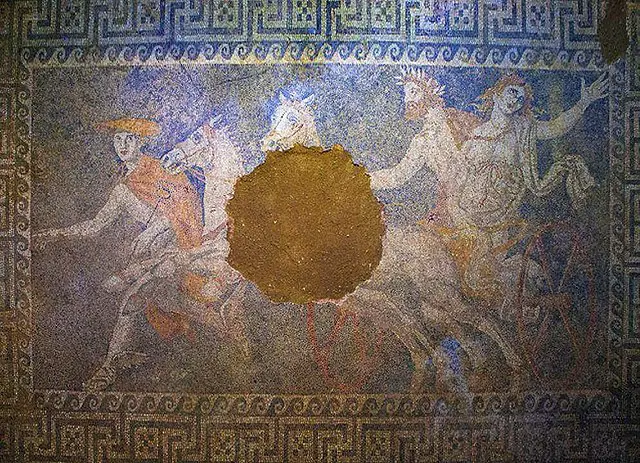| Further Reading | Medieval Knights: What A Group Of Knights Were Called and The 3 Ways Medieval Knights Would Work Out and Stay Fit |
During the middle ages the elite fighting force of Europe consisted of ennobled warriors that today we call Knights. These knights fought for their lords against other bands of knights and were paid a hefty sum to do so. However, how these knights were paid differs drastically with how people are paid today.
Medieval Knights were paid in two ways across Europe. First, a successful knight was given land by their monarch that was sufficient enough to support themselves and their laborers; this was called a knight’s fee. Second, extremely powerful knights or monarchs could impose a medieval tax called a scutage upon their subjects to collect money.
Typically medieval society did not deal with money. The concept of a daily wage did not exist until the late medieval society when the rise of the merchant class began. The reason that money was of no concern during the medieval era was because the entire medieval economy ran off land holding rights. This system of holding and working land in the name of a monarch is today called Feudalism.
Here at The History Ace I strive to publish the best history articles on the internet. If at the end you enjoyed this article consider subscribing to the free newsletter and sharing around the web.
Without further ado, here is the article on how much medieval knights got paid.
How Medieval Knights Got Paid A “Knight’s Fee”
The main way most medieval knights got paid was through something called a knight’s fee.
Successful knights would be awarded by their monarch lands and the right to seize production from these lands. A good knight would own villages and towns across Europe.
Further, knights would own all the labor rights to those lands. A knight would have serfs, or servants, work the lands to produce goods for the knight. These serfs would work jobs such as farmhands, blacksmiths, miners, or house servants.
The knight in turn would obtain all the products created from the serfs’ labor. This was the main way that medieval knights were paid across Europe.
When awarding a knight’s fee a monarch would calculate out the average amount of land it would take to support a knight, their family, and their mass army of servants.
Across northern Europe this often resulted in a size allotment of around 1,000-5,000 acres per knights fee. Successful knights could obtain multiple knights’ fees and grow a small kingdom within their monarch’s larger one.
However this presented problems for monarchs. Overtime knight families would become larger and more powerful. Factions would form and start to take significant amounts of lands.
Further, infighting would occur among knight families and factions. Today historians call these internal wars private wars.
These private wars within kingdoms would span centuries and create massive turmoil as each knight fought with other knights over securing more lands for themselves and their families.
This directly led to the second way that knights would be paid. By collecting taxes from their subjects in the form of a scutage.
However, the knight’s fee remains one of the main ways that medieval knights got paid.
How Medieval Knights Got Paid By Using A Scutage
Another way that medieval knights got paid was by imposing a scutage tax upon their subjects.
Only the most powerful of knights and monarchs could impose a scutage tax upon their subjects. These subjects could also be less powerful knights.
Normally a knight was required to provide mandatory military service in turn for the monarch giving them a certain portion of lands. This was the two part agreement of the knight’s fee.
However, extremely powerful knights who held a considerable amount of land could also impose a scutage on their subjects. This scutage was a mandatory tax that would create a significant amount of wealth for the knight in the form of collecting money from their subjects.
The reason that only extremely powerful knights and kings could impose a scutage tax was because the knight had to control lesser knights who owed military service to the powerful knight or lord.
The scutage tax would allow lesser knights to pay money instead of serving their mandatory military time.
As a result an extremely powerful knight or monarch could impose a scutage tax to raise funds for a military campaign. With this increased wealth the powerful knight or monarch could then buy mercenaries to aid them in the campaign.
As such one of the main ways that knights got paid was by imposing a scutage tax upon their subjects.
Conclusion
There you have it, an entire article detailing the 2 ways that medieval knights got paid throughout Europe.
The concept of medieval knights is fascinating. These professional warriors lived during a time where instead of money people fought and worked for honor, land, and prestige. It was not until the late medieval era that money started influencing the society of medieval Europe.
I hope you enjoyed this article. Here at The History Ace I strive to publish the best history articles on the internet. Feel free to sign up for the free newsletter to remain up to date on all things history.
Further, you can check out some of the other articles below.
-
How The American Revolution Changed The World

Here is how the American Revolution changed the world. Many people are not aware of just how important this event actually was.
-
Why The Roman People Loved Chariot Racing

Why did the Roman people love chariot racing? Well it all comes down to these 3 reasons.
-
The Design and Color of Roman Chariots

What was the design and color of Roman Chariots? Were they faster or slower then normal chariots? Well here is everything!
Sincerely,
Nick